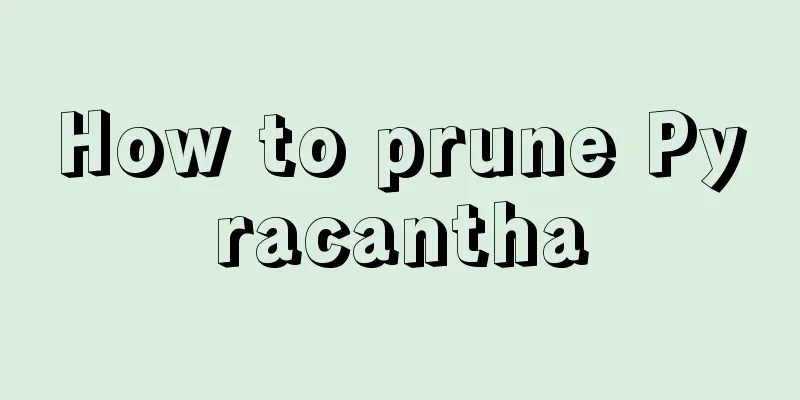The breeding methods and precautions of Cross Star Brocade

1. Maintenance methods1. Temperature: Cross Star Brocade is a cool-loving plant, and it grows best between 15 and 20 degrees. It has a peculiar habit of going dormant when the temperature is high, so generally speaking it will not grow in the summer. In addition, the temperature must be kept above ten degrees in winter. 2. Light: Cross Star Brocade prefers light. It is slightly tolerant of partial shade, but in very dark places, its plant shape will become very loose, and the pink color on the edges of its leaves will become lighter or even disappear. Therefore, do not place it in a place that is too dark. But in summer, strong light should be avoided. 3. Watering: Cross Star Plant likes a slightly dry environment and is very afraid of waterlogging. However, you can water it a little more during the growing period, specifically from September to June of the following year. It will not grow when the temperature is high. 4. Fertilization: The season when Cross Star Brocade needs fertilizer is also the growth period from September to June of the following year. The specific frequency can be once every two weeks or once a month. 2. Breeding techniques1. Reproduction: Reproduction can be carried out by beheading. Not only is the chance of success higher, but it can also shape the mother plant. As long as the temperature is suitable, it can generally be carried out. Choose strong branches with growth points, about three to five centimeters in length, and cut them off. After the wound has dried, it can be inserted into the matrix. Don’t water too much for now, water again after a few days. 2. Pruning: During the maintenance process, regular pruning is required. The main pruning is of branches that are too messy. After pruning, not only will its shape be better, but also the light transmittance will be better. 3. Problem diagnosis and treatment1. Diseases: There are often some diseases, especially in the summer when the temperature is high and the humidity is high. For example, "anthracnose", "leaf spot" and so on. Commonly used pesticides are carbendazim and the like, and timely pruning is required. 2. Pests: The two main types are "red spiders" and "aphids", which can be prevented and controlled by spraying insecticide two or three times. IV. Other issues1. Toxicity: It is not poisonous and can absorb harmful substances to a certain extent. 2. Can it be grown at home? Yes, it is very suitable to be grown as an ornamental plant and has good decorative effect. |
<<: Phoenix breeding methods and precautions
>>: Hydrangea cultivation methods and precautions
Recommend
Is it good to grow clam orchids at home?
1. Can be raised at home The clam orchid can be g...
How to sow the seeds of Pansy
1. Seed sowing Generally, when we plant pansies, ...
Can bananas be grown at home? This is the first time I've heard of this. Don't throw away the rotten bananas now.
Some friends may be thinking, are we going to tal...
How to grow potted onions
1. Adequate light Sunlight is an important factor...
Gardenia blooms several times a year. What should I do if it doesn’t bloom?
1. How many times a year Large gardenias usually ...
What to do if the roots of Begonia sempervivum are rotten
1. Breathable We need to fully understand the env...
What is the value of bayberry
Medicinal value of bayberry Bayberry fruit is ric...
Diseases and Pests of American Mint and Their Control Methods
American Mint Pests: Spodoptera exigua symptom No...
The best time for hydroponics of gardenia
1. Hydroponic time It is best to grow gardenia hy...
Can I use an oil drum to cover the Christmas cactus during the winter? (How to keep the Christmas cactus warm in winter)
Covering potted plants with transparent container...
How to divide and transplant the dripping guanyin
1. How to divide the plant 1. Division time: The ...
When is the best season to plant sorghum?
Sorghum Planting Season and Time The planting tim...
How to promote root growth of Calla Lily
1. Specific methods of root promotion There are g...
How to Spend the Summer with Begonia
How to Spend the Summer with Begonia The summer i...
How to get a high survival rate of cuttings of leaf fairy and when can the cuttings take root and survive?
Leaf fairy is also called tiger thorn vine and le...









